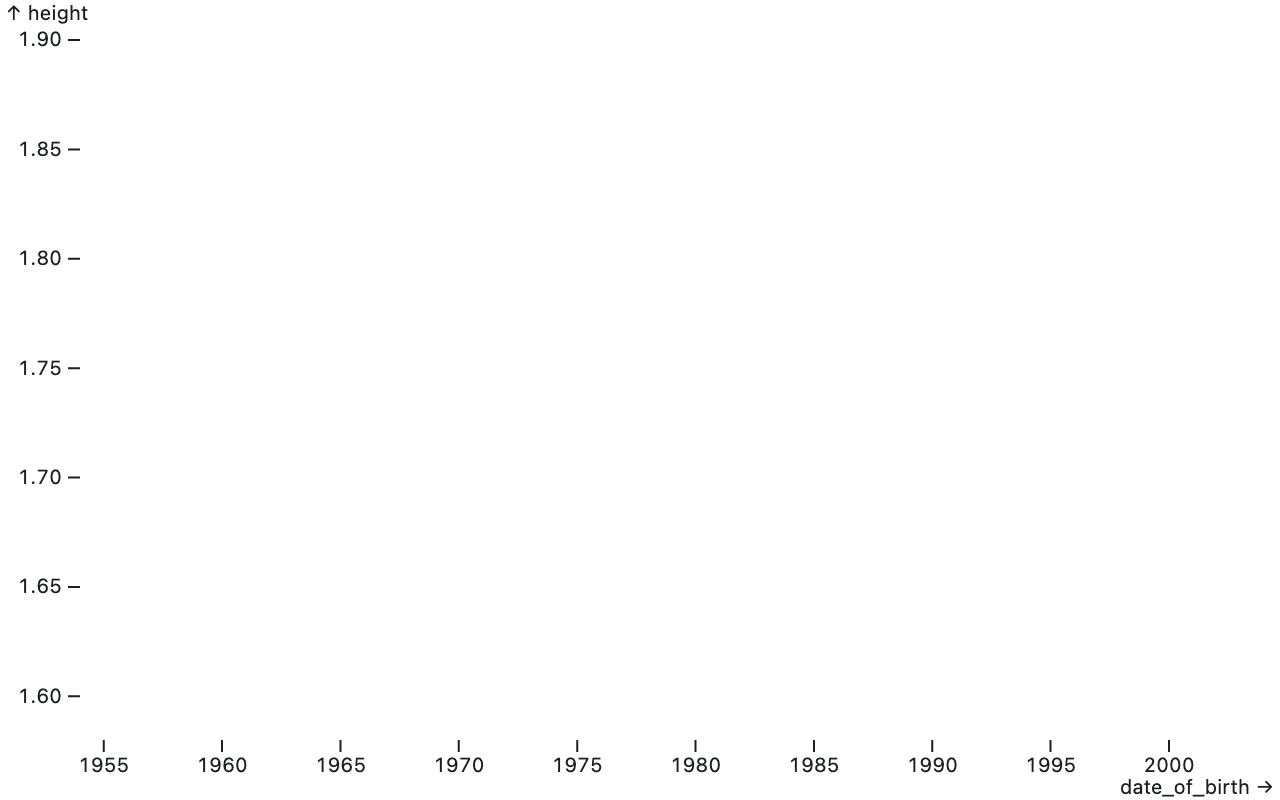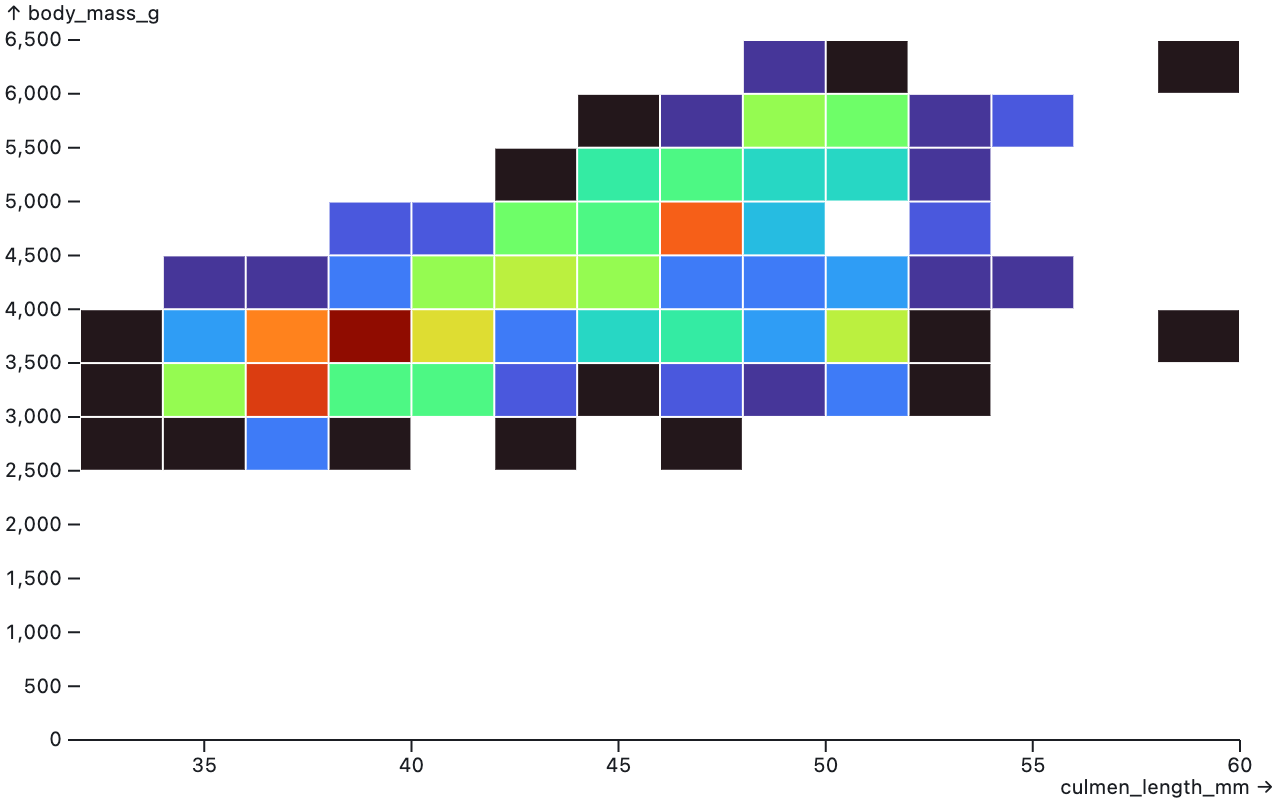-
Notifications
You must be signed in to change notification settings - Fork 192
Closed
Labels
bugSomething isn’t workingSomething isn’t working
Description
See examples. You get a bunch of zero-height bars:
Plot.auto(olympians, {x: "date_of_birth", y: { value: "height", reduce: "mean" }, mark: "bar"}).plot()
The easy fix is to change the last row of this to use rectY instead of rect, on the theory that Plot.auto never has enough information to use Plot.rect effectively:
Lines 159 to 174 in c489290
| case "bar": | |
| mark = yZero | |
| ? isOrdinalReduced(xReduce, X) | |
| ? barY | |
| : rectY | |
| : xZero | |
| ? isOrdinalReduced(yReduce, Y) | |
| ? barX | |
| : rectX | |
| : isOrdinalReduced(xReduce, X) && isOrdinalReduced(yReduce, Y) | |
| ? cell | |
| : isOrdinalReduced(xReduce, X) | |
| ? barY | |
| : isOrdinalReduced(yReduce, Y) | |
| ? barX | |
| : rect; |
That works in this case:
But it breaks the heatmap, because it gives it a zero baseline:
Plot.auto(penguins, {x: "culmen_length_mm", y: "body_mass_g", color: "count"}).plot()
Because we're inferring whether to show the zero baseline from the mark type:
Lines 217 to 220 in c489290
| // If zero-ness is not specified, default based on whether the resolved mark | |
| // type will include a zero baseline. TODO Move this to autoSpec. | |
| if (xZero === undefined) xZero = transform !== binX && (mark === barX || mark === areaX || mark === rectX); | |
| if (yZero === undefined) yZero = transform !== binY && (mark === barY || mark === areaY || mark === rectY); |
We could change that bit. But, moreover, the heatmap example shows that Plot.auto does sometimes have enough information to specify a rect mark: in the case of 2D binning. So just switching rect to rectY feels wrong.
mbostock
Metadata
Metadata
Assignees
Labels
bugSomething isn’t workingSomething isn’t working


